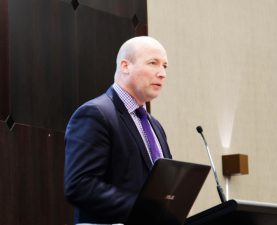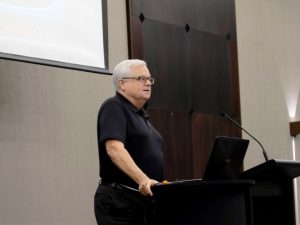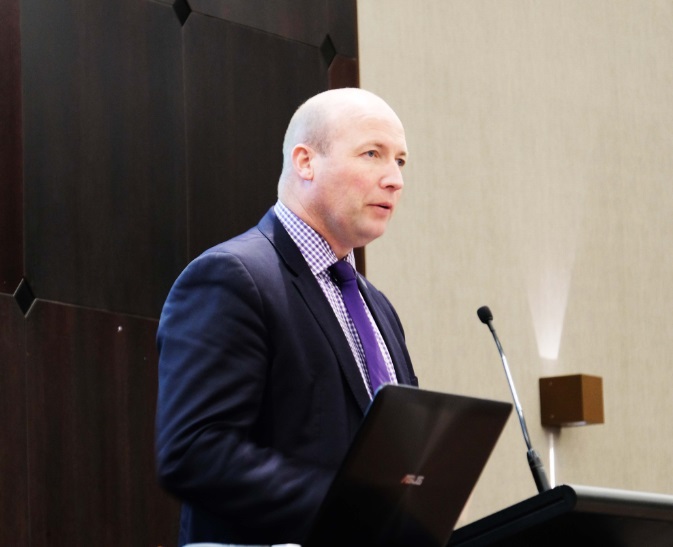
Just what is it that gives food integrity? How do you recognise, enhance and protect the honesty, uprightness, wholeness, sustainability and soundness of food?
There was a great deal of food for thought on the subject served up at the recent Food Integrity 2017 Conference held at Auckland’s Crowne Plaza. The Conference was the second created and run by the Asia Pacific Centre for Food Integrity (and held in Association with AJ Park) here in New Zealand, and preceded a US Food Protection and Defense Institute course on Intentional Adulteration of Food. Planning is already underway for next year’s conference.
The conference programme was a mix of topics and speakers both local and international, reflecting the multifaceted subject. In deciding on the programme for the event the organisers opted to create a conference where all aspects of the supply chain were recognised – allowing for cross-pollination of ideas and a good chance for collaboration. There were a number of international speakers, mainly from USA and China; the conference was opened by the Minister for Food Safety, the Hon David Bennett.
Keynote speaker William Marler, renowned (or is it feared?) by food producers as the leading food poisoning lawyer in the US had some pretty harrowing and salutary tales relating to undercooked hamburger patties, and the far reaching consequences to Food Safety Legislation in the US, and to the fast food industry worldwide. Very topical in New Zealand given the furore raised by chefs about cook time requirements and the new Food Act here in New Zealand.

Another highlight was the presentation by Ms Caroline Li from Goke Agriculture in China, which exemplified the response of major producers in China to the food safety reputation challenges they face. Another example of this response presented was the creation of the Food Safety Cloud by the Guizhou Academy of Sciences. Professor Tan and his team described an integrated information technology system that in two years has linked food producers, labs and Government. They have 23,000 food enterprises, 41,000 food types and 320 million data records already. The backing of the highest parts of China’s Government promises much in the growth of this area. Overwhelming impression of a country serious about cleaning up their act, and using technology, vertical integration, legislation and huge injections of money to do it. They may be starting the race with a handicap, but the potential to catch and overtake other countries in the food safety stakes is very real.
Quirky fact – Chinese speak of food exports when they mean sending food to other parts of China!
Protecting our food
On the local side, Detective Inspector Paul Borrell fascinated all by his description of the Operation Concord investigation – the botulism threat to Fonterra infant formula related to New Zealand’s 1080 use. In a session closed to the media (a condition of his presentation), Paul traced the award-winning Police investigation case, which led to the arrest and prosecution of the single blackmailer that caused countless millions of dollars of lost product, markets and reputation to New Zealand. It was impressive seeing a number of different agencies coming together to address an issue of national (and international importance). Riveting !
Having key members of the US Food Protection and Defense Institute present on global food defense, highlighting the dangers of the ‘intelligent adversary’ provided a good reminder and insight into the risks for the global food supply chain. While we tend to consider ourselves ‘safe’ in NZ reality indicates that complacency weakens our ability to protect export products. Dr Jennifer van de Ligt presented a number of case studies (some of which involved NZ companies) that reinforced the fact that no food producer was immune from the potential threat of deliberate adulteration or manipulation. There was a lively discussion on how best to maintain the integrity of food products including discussion on the purpose and benefit of a number of the food fraud databases that are available.
New trends to watch
While futurists predict what food in 2040 might look like, delegates were extremely receptive to two presentations on novel foods, which are available now in NZ. Alice Shopland from Angel Food talked about her motivation and experience in establishing a vegan ‘dairy’ product range in NZ. John Hollows from Keewai enthralled delegates with the inspiring story of how freshwater crayfish farming is a truly sustainable food product (and future export).
Ever considered food patent data as a comprehensive repository of information on food trends? Anton Gibson of A J Park used this data to present some intriguing facts. Such as the most active areas in food patents around the world are in aquaculture, meat analogues, vertical farming and insect proteins!
In an extremely timely and well-received presentation Sally Johnston of MPI described the interactive process of developing a novel template food control plan for small food retail businesses and food service businesses. Novel not only for its simplicity and format, but also from the extensive genuine grass roots consultation process that went into making it and translating it into a number of languages.
The Asia Pacific Centre for Food Integrity is a group of food-wise individuals with a wide-ranging involvement in things food and an aim to improve the overall integrity of food, independent of, but working with both industry and regulator – as well as hopefully make a living ! It has assisted small food producers, local governments, national governments and NGOs around the world.
It is hard to do justice to all the incredible presentations from this year’s conference – further information can be found at www.foodintegrityconference.com .
By
Geoff Allen and Dr Helen Darling
ASIA PACIFIC CENTRE for FOOD INTEGRITY



